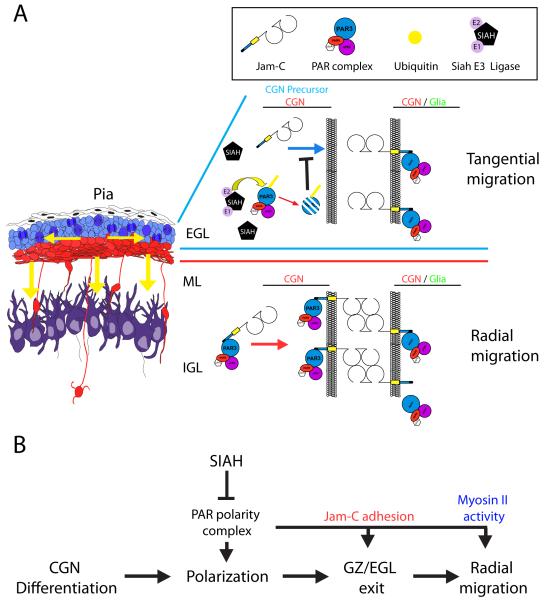Figure 4.
Model of Siah E3 ligase regulation of germinal zone exit. (A) During cerebellar development, CGN precursors migrate tangentially within the EGL. Upon differentiation and polarization, CGNs exit the GZ/EGL and migrate radially to traverse the ML and assume their final position in the IGL. Within the developing postnatal cerebellum, Siah (E3 ubiquitin ligase) is highly expressed in the EGL, where it ubiquitinates Pard3A, targeting it for proteasome-mediated degradation, which inactivates the PAR polarity complex. This inactivation inhibits recruitment of the JAM-C adhesion molecule to glial cell contacts with CGNs and CGN precursors. The absence of JAM-C–mediated adhesion prevents GZ exit by restricting the radial migration of CGN precursors. (B) The PAR polarity complex is necessary to allow differentiated CGNs to polarize, exit the GZ via JAM-C–mediated adhesion, and migrate radially via activation of the myosin II motor. Siah negatively regulates CGN polarization, GZ exit, and radial migration by inactivating the PAR polarity complex.

